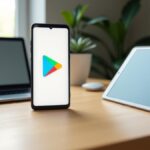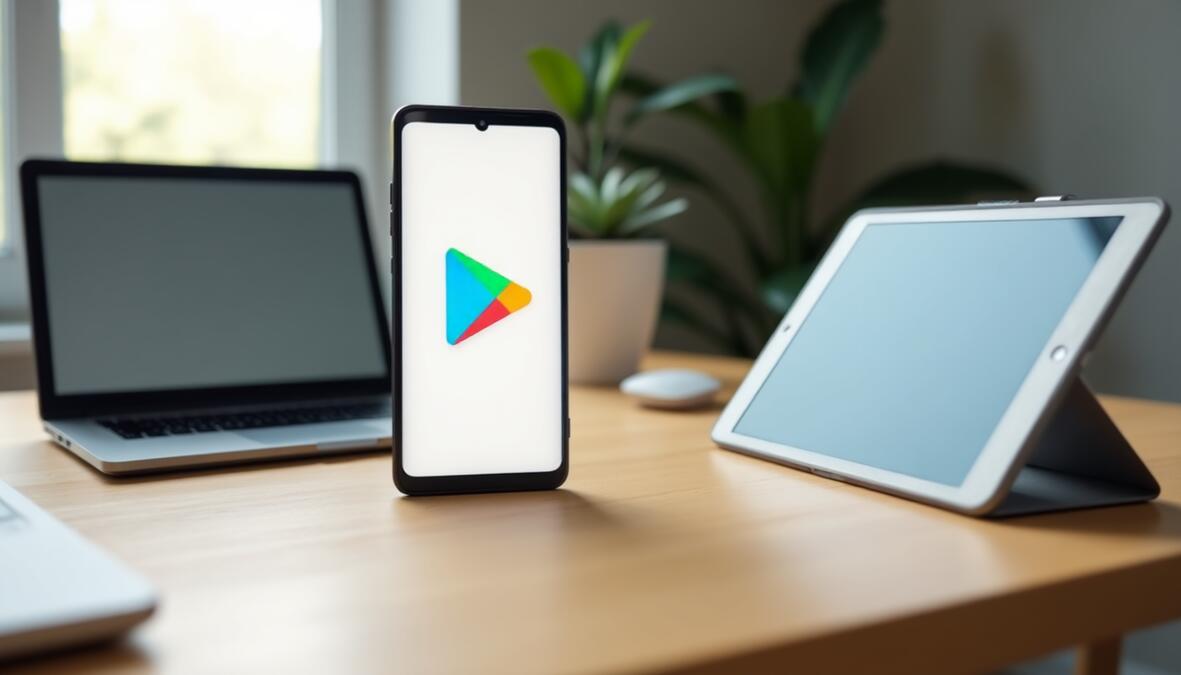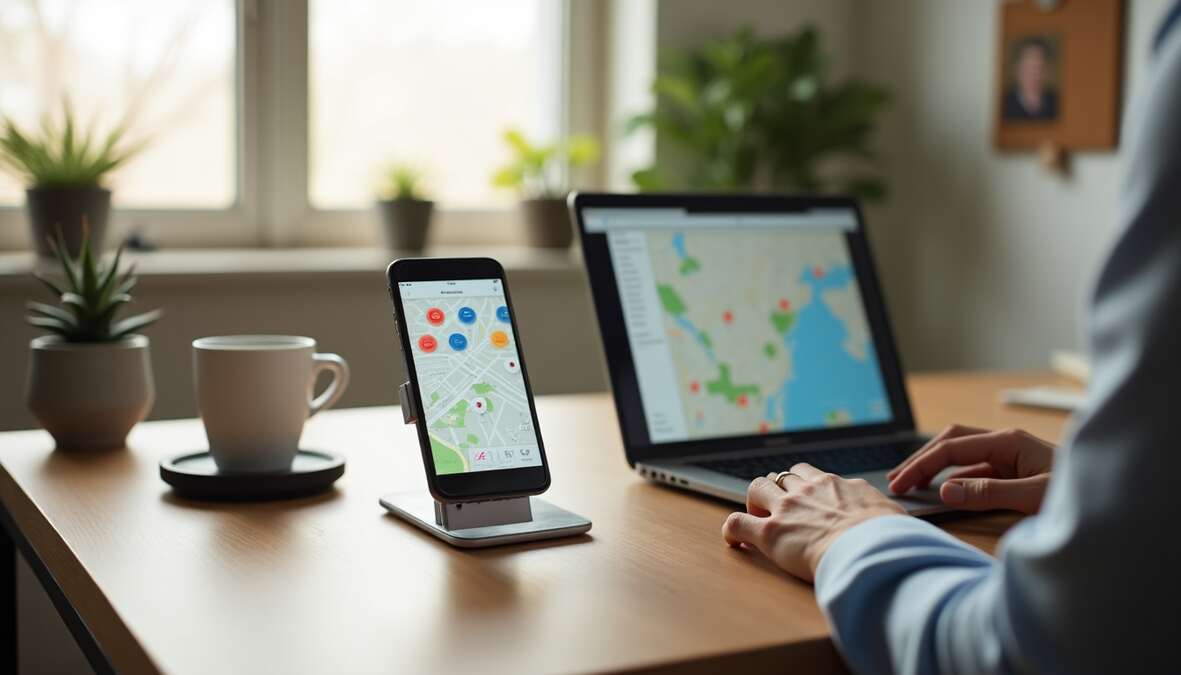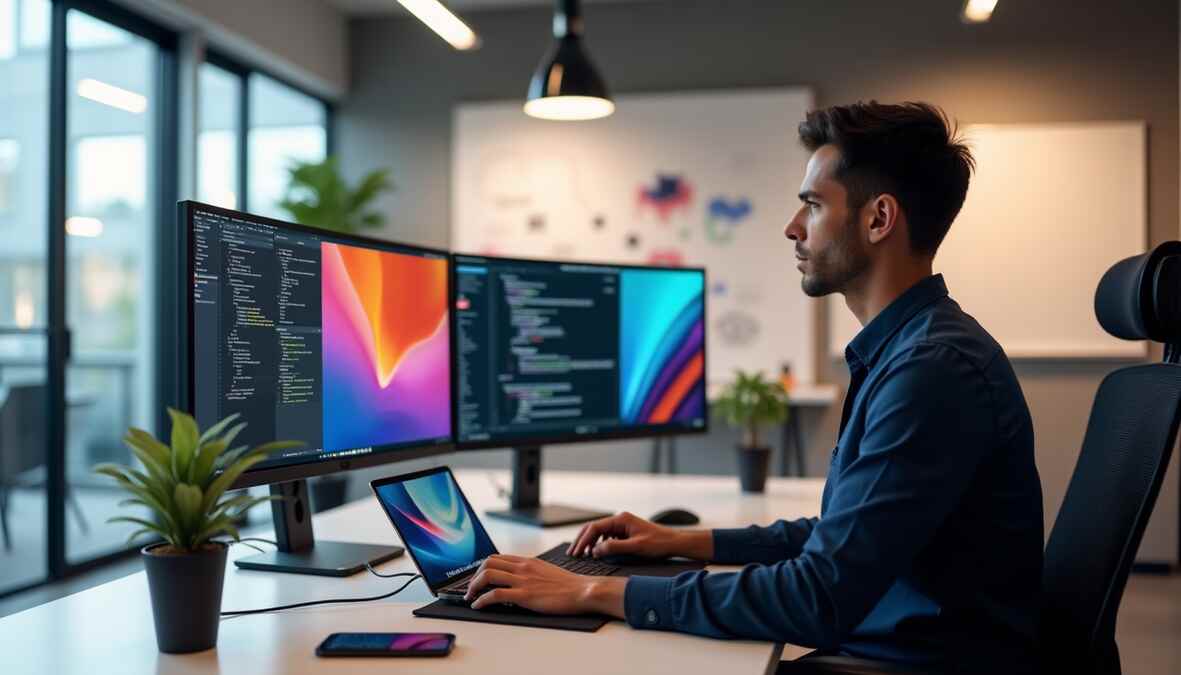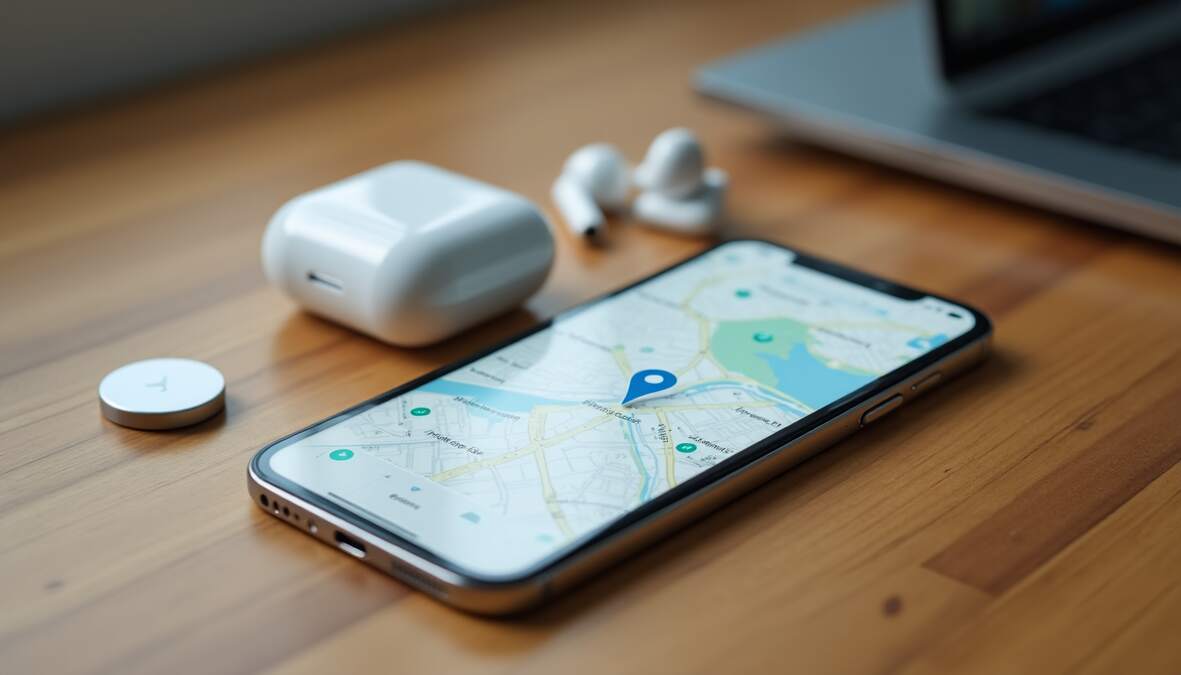Download Play Store: The Google Play Store comes pre-installed on most Android devices and gives you access to millions of apps. Recent security reports show why downloading from the official Play Store matters – Google removed 180 malicious apps that gathered 56 million downloads. This incident highlights the risks users face when downloading from unofficial sources.
Most Android devices have the Play Store ready to use, but you might need to download it yourself in some cases. Your Play Store could get accidentally deleted, you might be using a Chromebook, or setting up a new device. We’ll walk you through the steps to safely download and install the Play Store on different devices. Our detailed instructions will help you set up the Play Store correctly while you retain control of your device’s security.
Check if Your Device Supports Google Play
You need to confirm your device can run the Download Play Store before downloading apps. Not all Android devices support the Play Store. Understanding compatibility requirements is significant for successful installation.
Supported Android versions and devices
Download Play Store services, which powers the Play Store functionality, needs Android 6.0 (API level 23) or higher. This requirement exists because older Android versions lack critical security features and functionality needed for modern app compatibility.
The difference between Google Play services and the Google Play Store app needs to be clear. Though they work together, they’re separate components. Google Play services comes with Android as a system-level feature, while the Play Store serves as the app marketplace interface.
Many apps in the Play Store specify minimum Android version requirements. To name just one example, if an app needs Android 10 but your device runs Android 9, you won’t be able to download it. This protection mechanism stops apps from installing on incompatible systems where they might not work properly.
Your specific device’s official support status can be checked by:
- Visit Google’s official list of supported devices
- Check if your manufacturer and model appear in the list
- If unlisted, contact your device manufacturer for confirmation
Older devices face increasing compatibility problems. Apps may download but miss critical features or work poorly if your system doesn’t meet minimum requirements. Then, Google recommends keeping your Android device updated to the latest possible version for both security and app compatibility.
How to check if Play Store is pre-installed
All certified Android devices that support Google Play come with the Download Play Store app pre-installed. You can verify its presence through several methods if you can’t find it:
The Play Store’s presence on your device can be verified by:
- Look for the Play Store icon in your app drawer (colorful triangle logo)
- Search “Play Store” in your device’s search bar
- Check Settings > Apps for “Google Play Store” in the list
A more technical verification involves checking if the Play Store package exists. The modern Play Store uses the package name “com.android.vending” (previously “com.google.market” on older devices).
Your carrier or device manufacturer might have removed or disabled the Play Store if you can’t find it despite your device’s supposed support. Uncertified devices might show security issues, miss system updates, or have apps that don’t work correctly.
What to do if Play Store is missing
Try these troubleshooting steps if your Download Play Store app is missing but your device should support it:
- Check if it’s disabled: Open Settings > Apps > Google Play Store and see if it’s turned off or hidden
- Clear cache and data:
- Go to Settings > Apps
- Find “Google Play services”, tap Storage, then Clear Cache
- Return to Apps list, select “Google Play Store”
- Tap Storage, then Clear Cache and Clear Data
- Restart your device
- Verify internet connection: Make sure your device has a stable Wi-Fi or mobile data connection
- Contact manufacturer: Reach out to your device carrier or manufacturer if Play Store should be available but isn’t appearing
A factory reset might fix stubborn Play Store issues as a last resort. Note that backing up your data is essential before proceeding since this erases all files and applications.
Devices that truly can’t run Play Store (like Amazon Fire tablets or certain Chinese smartphones) need alternative methods to install apps. We’ll cover these scenarios in later sections of this piece.
The Google Play Store is a native application that typically can’t be uninstalled through normal means. If it’s missing from your device’s app pages, it’s probably disabled rather than deleted entirely.
How to Install Google Play Store on Android Devices
You might need to install the Download Play Store manually if it’s missing from your device or requires an update. The process involves some technical steps but most users can complete it without any specialized knowledge.
Enable unknown sources in settings
Your Android device needs permission to install apps from outside the Google Play Store. This setting is vital because your device blocks any APK installations by default to protect your security.
The method varies depending on your Android version:
For Android 9.0 and newer devices:
- Open the Settings app on your device
- Go to Apps & Notifications (or just Apps on Samsung devices)
- Tap the menu icon in the upper-right corner
- Select Special access then Install unknown apps
- Choose the browser you’ll use to download the APK (usually Chrome)
- Toggle the Allow from this source switch to ON position
For older Android versions (Android 8.0 and below):
- Go to Settings > Security
- Check the option labeled Unknown sources
- Tap OK on the security warning prompt
- Select Trust when prompted
Note that enabling unknown sources makes your device vulnerable to security risks. Google warns that Download Play Store apps from unknown sources could harm your device, lead to data loss, or expose your personal information to hackers. You should disable this setting after installing the Play Store.
Download the latest Play Store APK
The next step is downloading the actual Play Store application package (APK):
- Open your mobile browser (Chrome or other preferred browser)
- Visit a reputable APK hosting site like APKMirror or APKPure
- Search for “Google Play Store” (package name: com.android.vending)
- Select the most recent stable version that matches your device
- Download the APK file to your device
- Tap the downloaded file to begin installation
- Follow the on-screen prompts to complete installation
Make sure you download from trusted sources only. Some websites might distribute modified versions with malware. Google Play Protect adds extra security by scanning apps for malware even when you install from unknown sources.
Install Google Play Services if needed
Many users miss a vital detail: The Google Play Store needs Download Play Store Services to work. These components work together but serve different purposes.
Google Play Services runs in the background and:
- Keeps your apps updated and running smoothly
- Connects apps to other Google services like Sign In and Maps
- Provides authentication to Google services
- Enables synchronized contacts
- Delivers better quality, lower-powered location services
To install Google Play Services:
- Enable unknown sources (as explained earlier)
- Download the Google Play Services APK that matches your Android version and hardware
- Most modern devices need Android 6.0 (API level 23) or higher
- Install the APK by tapping the downloaded file
- Restart your device after installation
You might need to install additional components like Google Account Manager and Google Services Framework in a specific order for full compatibility. Android 12 and higher versions have specific requirements for these components.
Once installation completes, open the Play Store app and sign in with your Google account. You’ll have instant access to millions of apps and games. Don’t forget to turn off the “unknown sources” setting to restore your device’s security.
Installing Play Store on Chromebooks and School Devices
Chromebooks give you a different way to use Android apps through the Google Download Play Store compared to regular Android devices. The setup process looks different, especially if you use a managed device like a school Chromebook.
How to open Play Store on Chromebook
Your Chromebook might not have the Play Store ready right away. Here’s how you can get it going:
- First, click on the Quick Settings Panel at the bottom right of your screen
- Next, click the Settings icon (gear symbol)
- Scroll down until you see the Google Play Store section
- Click on “turn on” to enable the Google Play Store
- Read through the terms of service and click “Accept”
The Play Store icon shows up on your shelf (taskbar) at the bottom once you’re done. Your ChromeOS needs the latest updates if you can’t find the Play Store option in settings. Just head to Settings > About Chrome OS > Check for updates.
Note that not every Chromebook can run Android apps. Your device might not work with Android applications if the Play Store option isn’t there or appears grayed out.
How to download apps on school Chromebook
School Chromebooks usually have extra restrictions set by administrators. Here’s the basic process to download apps when allowed:
- Click the Play Store icon on your shelf once it’s enabled
- Click “Agree” to accept the Terms of Service the first time you open it
- Browse apps by category or search for specific ones
- Press the Install button on the app page after finding what you want
- The app downloads and installs by itself, then shows up in your Launcher
School-managed devices work a bit differently. Here’s what you should know:
- School admins need to turn on Play Store access first
- Students can only install pre-approved apps
- School administrators can make certain apps install automatically or limit which ones are available
Your IT department or teacher can approve more apps through the Google Admin Console if you need something specific for class.
Troubleshooting blocked installations
Apps might not install on school Chromebooks for several reasons:
Administrator restrictions shape what you can do through the Google Admin Console:
- The Google Play Store might be turned off completely
- Only approved apps might be available to install
- Specific apps might be blocked
Storage limitations often stop apps from installing. You can fix this by:
- Getting rid of apps and files you don’t use anymore
- Looking at your available storage in Settings > Device > Storage management
Compatibility issues mean some apps won’t work on your specific Chromebook model. The Play Store shows compatibility info before you install.
Connection problems can stop downloads. If this happens:
- Make sure your Wi-Fi works properly
- Try a different network if you can
System updates keep everything running smoothly:
- Check Settings > About Chrome OS > Check for updates
- Install any updates and restart your device
A quick restart might help if the Play Store crashes or won’t load. School IT support teams can usually fix blocked installations since they have administrator access.
Play Store Download for PC and FydeOS
Android devices and Chromebooks can access the Play Store directly, but PC users need different ways to run Android applications. Tech enthusiasts and developers can unlock new possibilities for testing, gaming, and increased efficiency by getting Google Play on their computers.
Google Play Store download for PC: emulator method
You’ll need software that simulates the Android environment to run Android apps on your PC. Several emulator options are available with their own advantages:
Android Studio is Google’s official development environment and provides the most authentic way to access Play Store on PC. This powerful tool has an Android Virtual Device (AVD) function that lets you create custom device profiles for testing. We designed it mainly for developers, but anyone can use it once they learn the setup process. The latest Android versions work well with it, and you get Play Store access after building an AVD with the Play Store icon.
BlueStacks gives casual users an easier approach. This prominent emulator comes with Google Play already installed, so you won’t need complex setup. The process is straightforward:
- Download BlueStacks from the official website
- Complete the installation process
- Sign in with your Google account
- Access the Play Store directly through the emulator
NoxPlayer, MEmu Play, and LDPlayer are good alternatives too, each optimized for specific uses like gaming or multitasking.
FydeOS download and Play Store setup
FydeOS (formerly Flint OS) brings a Chrome OS-like experience to Windows computers. The Download Play Store setup needs manual configuration, unlike regular Chromebooks:
It’s worth mentioning that FydeOS doesn’t officially support Google Play Store because of licensing requirements. FydeOS documentation states, “The Google Play Store requires appropriate licenses from Google for distribution”. Open GApps is needed to set up Google Mobile Services manually.
The Play Store installation on FydeOS requires:
- Enable Developer Mode to access core system settings
- Switch off root filesystem verification following FydeOS instructions
- Use the Open GApps configurator app (available in FydeOS Web Store)
- Complete the configuration in a few simple steps
The Android environment on FydeOS works only with Intel series graphics cards, so not all hardware will run Android apps.
Security considerations for PC installations
You should understand some important security implications of PC-based Play Store installations. Google Play Protect—Android’s built-in security system—scans apps during installation and checks your device regularly afterward.
Security risks exist even though emulators separate from your main system:
- Modified APKs may contain malware or unwanted software
- Unofficial distribution methods skip Google’s security checks
- Sideloaded apps might ask for too many permissions
The Zscaler ThreatLabz report found about 200 dangerous apps in the official Play Store with around eight million installations in 12 months. This risk gets higher with unofficial sources.
FydeOS documentation clearly warns users: “Due to security upgrades in FydeOS, installing Open GApps requires modifying core system settings”. These changes affect system security by turning off key protections.
Stay safe with Play Store on PC by:
- Only download emulators from official sources
- Keep your emulator updated
- Avoid sideloading apps when possible
- Review app permissions carefully
- Consider using a dedicated user account for emulation
You can enjoy Android apps safely on your PC by following these security precautions and understanding the available methods.
Fixing Play Store Issues and Errors
Download Play Store apps can run into frustrating issues even after perfect installation. Apps might stop downloading or stores might seem to disappear, but these problems have simple fixes once you learn why it happens.
Play Store download pending fix
You’ll often see the “download pending” message when you try to install or update apps. Several factors can cause this issue.
A weak internet connection is the first thing to check—unstable Wi-Fi or slow mobile data often leads to download delays. Try switching to a stronger Wi-Fi network or restart your router to get a better connection.
Your current download queue might be the problem. Too many downloads at once can create a traffic jam that keeps new installations waiting. Here’s what you can do:
- Open Google Play Store app
- Cancel all current downloads and updates
- Try downloading your desired app again by itself
Space issues can also stop downloads. Your device will pause downloads when it lacks sufficient space. Check Settings > Storage to see available space and remove unnecessary files if you have less than 1GB free.
How to update or reinstall Play Store
The Play Store itself might need an update or fresh install to work right. You can’t fully remove the Play Store—you can only turn it off and remove its updates.
To reinstall Play Store updates:
- Locate the Google Play Store app on your device
- Touch and hold the app icon
- Tap “App info”
- At the top right, tap More > “Uninstall updates”
- Confirm by tapping “OK”
After that, you can get the updates back by:
- Opening the Play Store app
- Tapping your profile picture > Settings > About
- Under “Play Store version,” selecting “Update Play Store”
Bad files can cause problems, but clearing the cache and data helps. This keeps your apps safe while removing problematic files:
- Go to Settings > Apps > Google Play Store
- Tap Storage & cache > Clear Cache
- Tap Clear storage/data > Delete
What to do if Google Play Store is deleted
The Download Play Store can’t actually be deleted through normal means. System apps like this can only be disabled or have updates removed. A missing Play Store icon usually means the app is disabled, not deleted.
Here’s how to get back a missing Play Store:
- Open Settings > Apps (or Application Manager)
- Look for “Google Play Store” in the complete apps list
- If found but disabled, tap “Enable”
Root access might let you delete the app completely, but that’s rare for regular users. Fixing this needs either official firmware or the right Google apps package for your device.
If regular fixes don’t work, try these steps:
- Restart your device completely
- Remove and re-add your Google account
- Clear Download Manager cache and data
- Check for system updates
Note that most cases of Play Store “deletion” are just disabled apps that you can fix without technical skills or risky steps.
Alternatives to Play Store and When to Use Them
The Android app world extends far beyond the Google Play Store, offering different ways to get your apps. Users need to know their options when the Play Store isn’t available or they want something different.
Aurora Store and F-Droid overview
Aurora Store stands as the only real Download Play Store alternative. It pulls every app from Google’s catalog and lets you browse anonymously without a Google account. This makes perfect sense for anyone who wants to remove Google services but keep their favorite apps.
F-Droid takes a different path by focusing only on free and open-source software (FOSS). The store has become the go-to place for privacy-focused Android apps. You’ll find apps here that Google Play won’t host due to their rules. Each app comes free, protects your privacy, and goes through unique checks unlike commercial platforms.
Other notable options include:
- Droid-ify: A faster material F-Droid client with better usability
- Obtainium: Updates your installed packages straight from their release pages
- APKPure: Lets you download Android apps without needing a Google account
Risks of sideloading apps
Sideloading brings real security risks to your device. Users who sideload apps are 80% more likely to end up with malware than those who don’t. The numbers tell the story – 38.5% of malware comes from sideloaded apps.
Android blocks unknown sources by default to protect you. This safety measure exists because sideloaded apps skip the security checks that official stores use. Your device could face:
- Malware that takes over your entire device
- Thieves stealing your sensitive data
- Fake apps that steal your banking details
- Modified apps with hidden fraud tools
When to consider alternative app stores
Alternative stores work best if you can’t get certain apps on Google Play because of regional blocks or policy issues. Developers might also like these platforms to avoid the fierce competition on mainstream stores.
These stores shine in specific situations:
- Privacy fans love F-Droid’s open approach to data protection
- You might find unique apps on manufacturer-specific stores
- Developers can reach dedicated users with less competition
The choice between benefits and security depends on what you need and how much risk you’ll accept. Most people should stick with Google Play unless they really need something different.
Conclusion
The Google Play Store isn’t as complicated as it looks. You’ll find it easy to download and manage once you know the right steps. The official Play Store will give you protection from malware and access to millions of verified apps.
Each device needs its own setup approach. Android phones require compatibility checks. Chromebooks need Play Store enabled in their settings. PCs work only with emulators or special operating systems. Your security stays crucial whatever method you choose, especially if you’re thinking over alternative app stores or sideloading options.
Most Play Store problems have simple fixes. You can try basic troubleshooting like clearing the cache, checking available storage, or testing your internet connection. If you still face issues, Google’s support channels can help you tackle more complex installation challenges.
The Play Store ended up being the safest way to get Android apps. While other options exist for specific needs, an updated official installation gives you the perfect mix of convenience, security, and reliable access on your supported devices.
FAQs
Q1. Can I install Google Play Store on any Android device? Not all Android devices support Google Play Store. It requires Android 6.0 or higher and the device must be certified by Google. Check your device’s compatibility before attempting to install.
Q2. How do I enable the Play Store on my Chromebook? To enable Play Store on a compatible Chromebook, go to Settings, scroll to the Google Play Store section, and click “Turn On.” Accept the terms of service, and the Play Store icon will appear on your shelf.
Q3. Is it safe to download the Play Store APK from third-party websites? While it’s possible, it’s not recommended due to security risks. Always download from trusted sources like APKMirror or APKPure. Enable Google Play Protect for an extra layer of security when installing from unknown sources.
Q4. What should I do if the Play Store keeps showing “download pending”? First, check your internet connection and switch to a stronger network if possible. Cancel all current downloads and updates, then try downloading your desired app again. Also, ensure you have sufficient storage space on your device.
Q5. Are there any safe alternatives to the Google Play Store? Yes, there are alternatives like Aurora Store and F-Droid. Aurora Store provides anonymous access to Google Play apps, while F-Droid focuses on free and open-source software. However, always exercise caution when using alternative app stores and be aware of potential security risks.
Read more: Find My iPhone


![Best Tracking App Guide: Hidden Features You Never Knew Existed [2025] best tracking app](https://hodtech.online/wp-content/uploads/2025/04/best-tracking-app-150x150.jpg)


